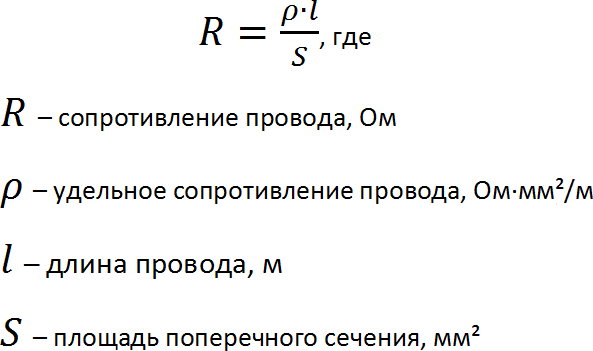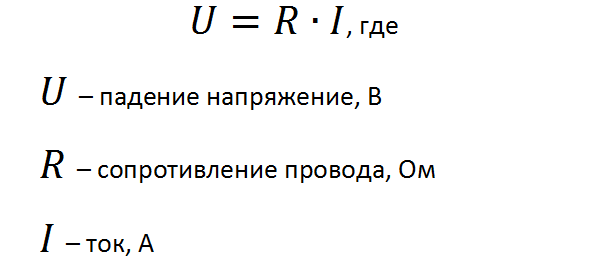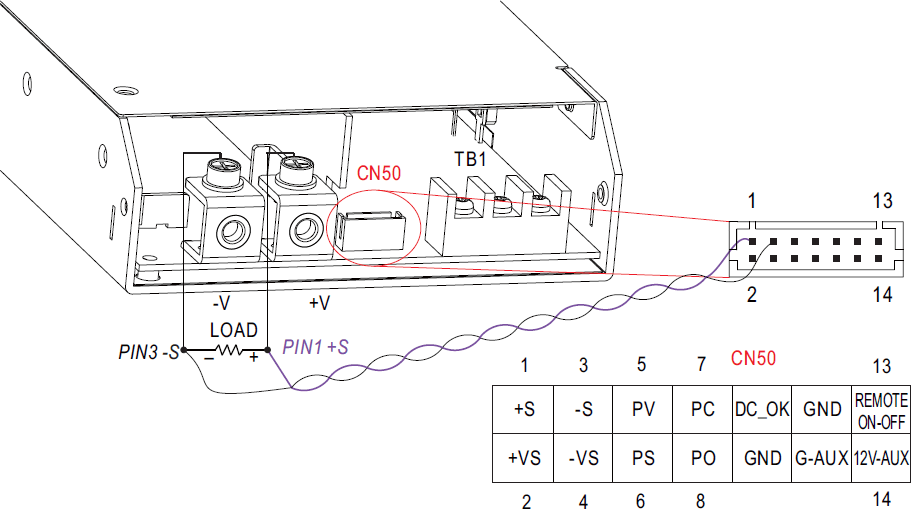Функция контроля выходного напряжения Remote Sense в блоках питания компании MEAN WELL
Одной из основных задач в области передачи и использования электроэнергии является уменьшение потерь, которые с одной стороны создают бесполезный расход энергии, с другой стороны – обеспечивают ненужный нагрев оборудования и соединительных проводов. Если на малой мощности эти потери могут быть не существенной величиной, то на средней и большой мощности (сотни и тысячи Вт) потери могут быть уже значительными.
Наличие потерь в электротехнике основывается на том факте, что практически каждый проводящий материал, например, медь, имеет некоторое собственное (удельное) сопротивление. Так, сопротивление соединительных проводов определяется по формуле:
 Формула сопротивления соединительных проводов
Формула сопротивления соединительных проводов
Как видно из формулы, напрямую на потери влияют длина и площадь поперечного сечения провода, и, чем больше длина и меньше сечение, тем будет выше сопротивление электрическому току в проводе и, как следствие – будут больше потери. В конечном итоге эти потери выражаются в нагреве соединительных проводов, а также в падении напряжения непосредственно в месте подключения нагрузки, что может быть критично для запуска или эксплуатации конечного оборудования. Падение напряжения на проводе за счет его сопротивления рассчитывается исходя из закона Ома:
 Падение напряжения на проводе по закону Ома
Падение напряжения на проводе по закону Ома
Поскольку использовать провода максимально возможного сечения и с самым низким удельным сопротивлением не всегда является возможным и/или экономически целесообразным, то для обеспечения заданного уровня напряжения на нагрузке проще всего поднять уровень выходного напряжения на самом блоке питания в целях компенсации потерь. В блоках питания компании MEAN WELL функция контроля выходного напряжения и повышения выходного напряжения для компенсации потерь называется Remote Sense (R.S.).
Особенностью использования функции является необходимость подключения выводов R.S. в месте подключения нагрузки на выходе соединительных проводов по основному каналу. Подключение выводов R.S. должно осуществляться витой парой для помехозащищенности на этом соединении, сечение провода неважно, так как потребляемый ток для измерений минимальный. При подключении проводов RS важно соблюдать полярность – плюс к плюсу, минус к минусу, во избежание выхода источника питания из строя.
 Подключение при использовании функции Remote Sense на примере RSP-750
Подключение при использовании функции Remote Sense на примере RSP-750
Величина компенсации падения напряжения небольшая – порядка 0.3-0.5В в зависимости от серии, сама подстройка выходного напряжения источником питания осуществляется автоматически. Функция Remote Sense реализована в источниках питания корпусного типа средней и большой мощности – серия без встроенного корректора коэффициента мощности (ККМ) SE-1000, мощные и функциональные источники питания серии PSP-600, низкопрофильные блоки питания с ККМ серий RSP-500, RSP-750, RSP-1000, RSP-2000, источники питания высокой надежности серий HRP-150, HRP-300, HRP-600 и другие серии.
Также в большинстве источников питания MEAN WELL встроена подстройка выходного напряжения в пределах ±10%, которую также можно использовать для компенсации падения напряжения на проводах. В этом случае при инсталляции системы питания следует произвести разовые замеры фактического падения и увеличить выходное напряжение на требуемую величину.
Более подробно технические характеристики и особенности источников питания компании MEAN WELL представлены в Спецификациях на страничке товара. Для консультирования или уточнения информации по источникам питания MEAN WELL можно обращаться по адресу электронной почты Meanwell@chipdip.ru.
